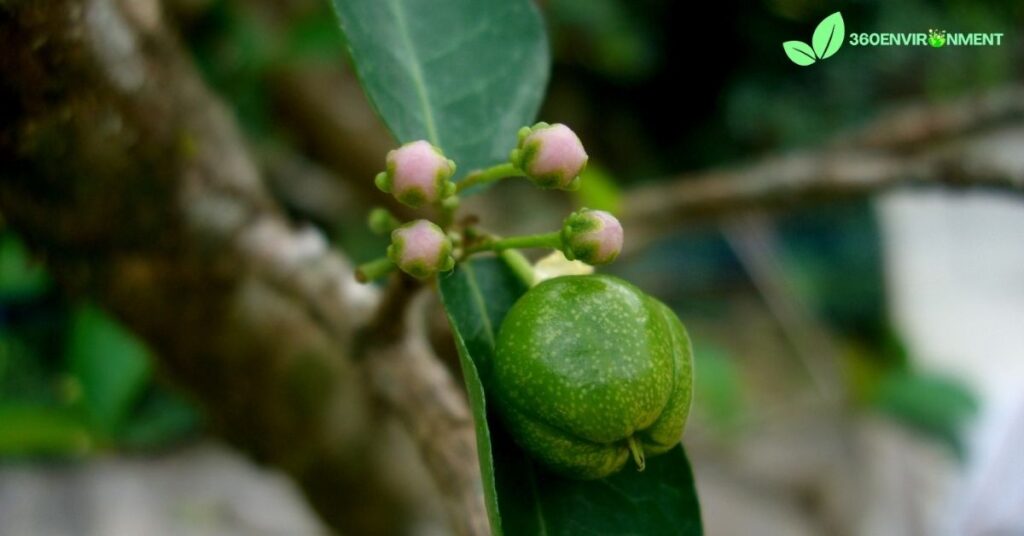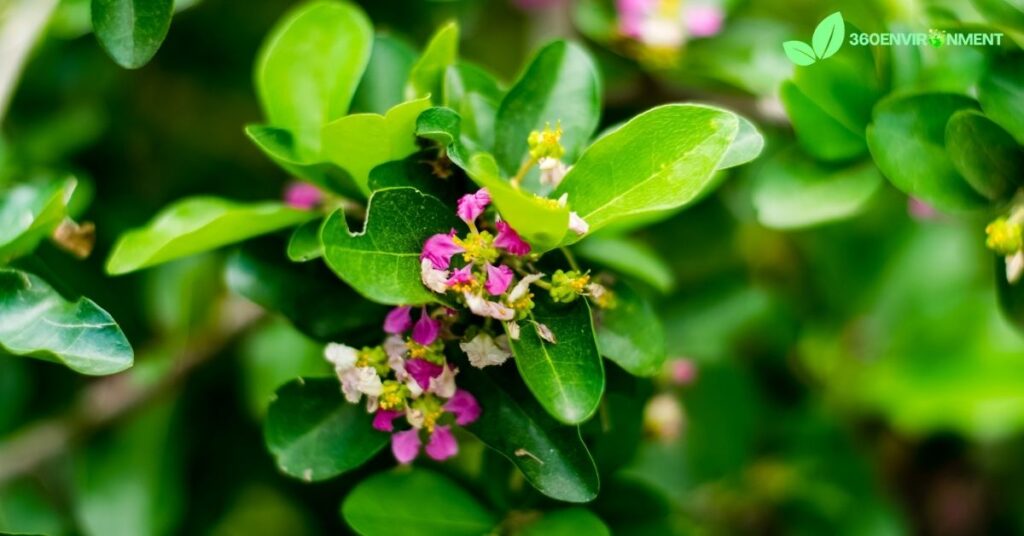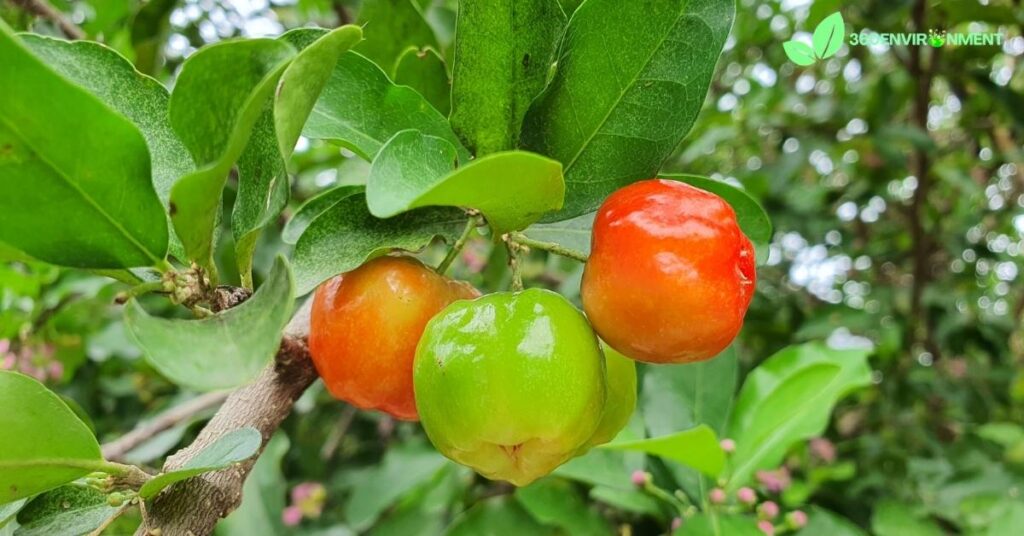The Malpighia plant, commonly known as Barbados cherry or acerola, belongs to the Malpighiaceae family and is highly valued for its small, bright red fruit, which is rich in vitamin C. Native to the tropical and subtropical regions of the Americas, particularly the Caribbean and Central and South America, the Malpighia plant has become well-known not only for its nutritional benefits but also for its adaptability to a variety of climates and environmental conditions. The plant is also cultivated in regions of Asia and Africa, where it is grown for both ornamental and agricultural purposes.
In this article, we will explore the environmental niche of the Malpighia plant, focusing on its natural habitat, ecological roles, interactions with wildlife, and contributions to human health and agriculture. Additionally, we will examine its adaptability to different environmental conditions, its use in sustainable agriculture, and its importance in soil and ecosystem health.
1. Overview of the Malpighia Plant
The Malpighia plant (Malpighia emarginata) is a tropical shrub or small tree that produces bright red or orange fruit, commonly known as acerola or Barbados cherry. This fruit is one of the richest natural sources of vitamin C, making the plant highly valued for its health benefits. In its native range, the Malpighia plant grows in a variety of habitats, including forests, coastal areas, and disturbed lands. It has also been introduced to many other tropical and subtropical regions, where it thrives in a range of environmental conditions.

1.1. Physical Characteristics of the Malpighia Plant
The Malpighia plant is a versatile and resilient species that displays several key physical characteristics that contribute to its success in diverse environments:
- Size and Shape: The Malpighia plant is typically a shrub or small tree that can grow to heights of 1 to 5 meters (3 to 16 feet), depending on the environment. It has a dense, bushy growth habit, with numerous branches that form a rounded or irregular canopy.
- Leaves: The leaves of the Malpighia plant are simple, oval-shaped, and glossy, measuring between 2 to 7 centimeters in length. The leaves are evergreen, allowing the plant to photosynthesize year-round in tropical climates.
- Flowers: The plant produces small, delicate flowers that are pink or white in color and appear in clusters. These flowers are important for pollination and attract various pollinators, such as bees and butterflies.
- Fruit: The fruit of the Malpighia plant is a bright red or orange berry that measures about 1 to 2 centimeters in diameter. The fruit is juicy and slightly tart, and it is highly prized for its high concentration of vitamin C, which is much higher than that found in oranges or lemons.
1.2. Growth Habits and Life Cycle
The Malpighia plant is a perennial species that grows and produces fruit year-round in tropical climates, although its peak fruiting season may vary depending on local environmental conditions.
- Germination and Early Growth: Malpighia seeds germinate readily in warm, moist conditions. The seedlings grow quickly, particularly when exposed to full sunlight, which encourages strong stem and leaf development.
- Maturity and Reproduction: The Malpighia plant reaches maturity within two to three years of planting and begins producing flowers and fruit soon after. It is a prolific fruit bearer, with some plants producing several harvests of fruit each year.
- Longevity: The plant is long-lived in its native environment and, when properly cared for, can continue to produce fruit for many years.
2. Habitat and Geographic Distribution of the Malpighia Plant
The Malpighia plant is native to the tropical regions of the Americas, but it has been widely cultivated and naturalized in other tropical and subtropical regions around the world. Its adaptability to a range of climates and soil types has made it a popular choice for cultivation in both agricultural and ornamental settings.

2.1. Native Habitat in the Americas
In its native range, the Malpighia plant is found in a variety of habitats, from coastal forests to dry scrublands. It is particularly common in the Caribbean, Central America, and northern South America.
- Tropical Forests: The Malpighia plant thrives in the warm, humid conditions of tropical forests, where it grows as part of the understory or along forest edges. Its evergreen leaves allow it to take advantage of year-round sunlight, while its dense canopy helps protect the soil from erosion and maintain moisture levels.
- Coastal Areas: In coastal regions, the plant is often found growing in sandy soils, where it is well-adapted to withstand salt spray and strong winds. Its ability to tolerate salt makes it an important species for stabilizing coastal dunes and preventing erosion.
- Disturbed Lands: The Malpighia plant is also commonly found in disturbed areas, such as abandoned fields, roadsides, and degraded lands. Its resilience and fast-growing nature allow it to colonize open spaces quickly, making it useful for land rehabilitation and reforestation efforts.
2.2. Introduced Range and Global Cultivation
The Malpighia plant has been introduced to many other regions with tropical and subtropical climates, where it is grown for its fruit and ornamental value. It has become naturalized in parts of Africa, India, Southeast Asia, and the Pacific Islands.
- Africa and Asia: In Africa and Asia, the Malpighia plant is grown in gardens and orchards, where it is valued for its vitamin C-rich fruit. The plant has adapted well to these regions and is often grown alongside other tropical fruit trees.
- Southeast Asia and the Pacific: The Malpighia plant has become a common sight in home gardens and agricultural systems in Southeast Asia and the Pacific Islands. Its fast growth and low maintenance requirements make it a popular choice for small-scale farmers and home gardeners.
2.3. Climate and Soil Preferences
The Malpighia plant is highly adaptable to a range of environmental conditions, though it thrives best in warm, tropical climates with plenty of sunlight and moisture.
- Climate: The plant prefers tropical and subtropical climates with temperatures ranging from 25 to 30°C (77 to 86°F). It can tolerate short periods of drought but performs best in areas with consistent rainfall or irrigation.
- Soil: The Malpighia plant can grow in a variety of soil types, from sandy coastal soils to rich, loamy soils in forested areas. It prefers well-drained soils but can tolerate poor or rocky soils as long as there is adequate moisture.
3. Ecological Role and Interactions with Wildlife
The Malpighia plant plays a vital role in the ecosystems it inhabits, providing food and habitat for various species of wildlife. Its flowers and fruit are important sources of nectar and food for pollinators and seed dispersers, while its dense foliage offers shelter for small animals.

3.1. Pollinators and Flowering Season
The Malpighia plant produces small, brightly colored flowers that attract a range of pollinators, including bees, butterflies, and hummingbirds. These pollinators play a crucial role in the reproduction of the plant, transferring pollen from one flower to another and ensuring the development of fruit.
- Bees: Bees are among the most important pollinators of the Malpighia plant. They are attracted to the flowers by their sweet nectar and play a vital role in ensuring the plant’s successful reproduction.
- Butterflies and Hummingbirds: In addition to bees, butterflies and hummingbirds are frequent visitors to the Malpighia plant’s flowers. Their long tongues allow them to reach the nectar inside the flowers, while their movements help facilitate pollination.
3.2. Fruit and Seed Dispersal
The bright red or orange fruit of the Malpighia plant is a favorite food of many species of birds, mammals, and insects. The fruit is rich in nutrients, particularly vitamin C, making it an important source of food for wildlife.
- Birds: Birds are one of the primary dispersers of Malpighia seeds. After consuming the fruit, birds excrete the seeds in new locations, helping the plant colonize new areas. This mutualistic relationship benefits both the plant and the birds, as the fruit provides a nutritious meal while the birds aid in seed dispersal.
- Small Mammals: In addition to birds, small mammals such as bats and rodents also consume the fruit of the Malpighia plant. These animals play a similar role in seed dispersal, helping the plant expand its range.
3.3. Habitat and Shelter for Wildlife
The Malpighia plant provides valuable habitat and shelter for a variety of wildlife species. Its dense foliage offers protection from predators and harsh weather conditions, making it an ideal shelter for small animals.
- Birds and Nesting Sites: Many bird species use the branches and foliage of the Malpighia plant as nesting sites. The dense canopy provides protection from predators and the elements, while the proximity to food sources makes it a convenient location for raising young.
- Insects and Other Arthropods: The Malpighia plant’s leaves, flowers, and fruit attract a variety of insects and other arthropods, including ants, beetles, and spiders. These small creatures contribute to the overall biodiversity of the ecosystem and play important roles in pollination, pest control, and decomposition.
4. Adaptations and Survival Strategies of the Malpighia Plant
The Malpighia plant has developed several key adaptations that enable it to thrive in a range of environments, from tropical forests to coastal areas and disturbed lands. These adaptations have made it a resilient and versatile species, capable of surviving in challenging conditions.

4.1. Drought Tolerance and Water Conservation
One of the most important adaptations of the Malpighia plant is its ability to tolerate periods of drought. While the plant prefers consistent moisture, it can survive in areas with irregular rainfall by conserving water and reducing its water needs during dry periods.
- Water Conservation Mechanisms: The plant’s evergreen leaves are thick and waxy, helping to reduce water loss through transpiration. This adaptation allows the plant to retain moisture during dry periods, ensuring its survival in areas with fluctuating rainfall.
- Root System: The Malpighia plant has a deep and extensive root system that allows it to access water from deeper soil layers. This enables the plant to survive in areas with poor or shallow soils where water is less readily available.
4.2. Salt Tolerance and Coastal Adaptations
The Malpighia plant is well-adapted to coastal environments, where it is often exposed to salt spray and strong winds. Its ability to tolerate these conditions makes it an important species for stabilizing coastal ecosystems and preventing erosion.
- Salt Tolerance: The plant’s ability to tolerate salt is one of its key adaptations to coastal environments. Its leaves and roots can withstand exposure to salt without suffering damage, allowing it to grow in sandy soils near the ocean.
- Wind Resistance: In addition to its salt tolerance, the Malpighia plant is also resistant to strong winds, which are common in coastal areas. Its flexible branches and dense foliage help protect the plant from wind damage, allowing it to thrive in exposed locations.
4.3. Fast Growth and Reproductive Strategies
The Malpighia plant is a fast-growing species that produces large quantities of fruit and seeds each year. This rapid growth and prolific fruit production allow the plant to colonize new areas quickly and establish itself in a variety of environments.
- Fast Growth: The Malpighia plant grows quickly in favorable conditions, allowing it to outcompete other vegetation in disturbed or degraded areas. This rapid growth makes it a valuable species for reforestation and land rehabilitation projects.
- Prolific Fruit Production: The plant produces fruit year-round in tropical climates, with peak fruiting occurring during the rainy season. This continuous fruit production ensures a steady supply of food for wildlife and allows the plant to spread its seeds over a wide area.
5. Agricultural and Economic Importance of the Malpighia Plant
In addition to its ecological roles, the Malpighia plant is highly valued for its agricultural and economic contributions. Its fruit, known as acerola or Barbados cherry, is a rich source of vitamin C and is used in the production of dietary supplements, juices, and other health products.

5.1. Nutritional and Medicinal Uses
The fruit of the Malpighia plant is renowned for its high vitamin C content, which is many times higher than that of oranges or lemons. This makes it a valuable crop for the production of health supplements and functional foods.
- Vitamin C-Rich Fruit: Acerola fruit is one of the richest natural sources of vitamin C, containing up to 4,000 milligrams of vitamin C per 100 grams of fruit. This high concentration of vitamin C makes it a popular ingredient in dietary supplements, juices, and other health products.
- Antioxidant and Medicinal Properties: In addition to its vitamin C content, the fruit of the Malpighia plant is also rich in antioxidants, which help protect the body from oxidative stress and inflammation. Traditional medicine systems in the Americas have long used acerola fruit to treat colds, infections, and digestive disorders.
5.2. Cultivation and Economic Value
The Malpighia plant is cultivated on a commercial scale in many tropical regions, where it is grown for both its fruit and ornamental value. The plant’s fast growth and low maintenance requirements make it an attractive crop for farmers and gardeners alike.
- Commercial Cultivation: The cultivation of the Malpighia plant is widespread in tropical regions, where it is grown for its fruit, which is harvested and processed into juices, jams, and dietary supplements. The plant is also grown as an ornamental species in gardens and parks, where it adds aesthetic value and attracts wildlife.
- Economic Value: The global market for acerola products has grown significantly in recent years, driven by increasing demand for natural and organic health supplements. This has made the Malpighia plant an important economic crop in countries such as Brazil, Mexico, and India, where large-scale acerola orchards have been established.
6. Conservation and Sustainability of the Malpighia Plant
The Malpighia plant plays an important role in sustainable agriculture and conservation efforts, particularly in regions where land degradation and soil erosion are major concerns. Its adaptability, fast growth, and ability to improve soil quality make it a valuable tool for promoting sustainability and environmental health.

6.1. Role in Land Rehabilitation and Reforestation
The Malpighia plant is often used in reforestation and land rehabilitation projects, particularly in tropical regions where deforestation and land degradation have led to the loss of biodiversity and soil fertility.
- Soil Stabilization: The plant’s deep root system helps stabilize soil and prevent erosion, making it a valuable species for rehabilitating degraded lands. Its fast growth and ability to thrive in poor soils make it an ideal pioneer species for restoring ecosystems.
- Promoting Biodiversity: By providing food and habitat for a variety of wildlife, the Malpighia plant contributes to the overall biodiversity of the ecosystems it inhabits. Its presence helps create a more balanced and resilient environment, which is essential for the long-term health of the planet.
6.2. Sustainable Farming Practices
In addition to its role in reforestation, the Malpighia plant is also an important component of sustainable farming systems. Its ability to improve soil quality and reduce the need for chemical inputs makes it a valuable species for promoting environmentally friendly agriculture.
- Agroforestry and Polyculture: The Malpighia plant is often grown as part of agroforestry systems, where it is intercropped with other fruit trees or cash crops. This practice helps improve soil fertility, reduce the need for chemical fertilizers, and promote greater biodiversity on farms.
- Organic Farming: The growing demand for organic and sustainably produced food has increased interest in the cultivation of the Malpighia plant using organic farming methods. By avoiding the use of synthetic pesticides and fertilizers, farmers can produce acerola fruit in a way that is healthier for both consumers and the environment.
Conclusion: The Ecological and Economic Importance of the Malpighia Plant
The Malpighia plant is a versatile and resilient species that plays an important role in both natural ecosystems and human agricultural systems. Its ability to thrive in a wide range of environments, provide food and habitat for wildlife, and contribute to human health and economic growth makes it a valuable species in the global effort to promote sustainability and environmental stewardship.
By understanding the environmental niche of the Malpighia plant, we can appreciate its contributions to biodiversity, soil health, and sustainable agriculture.
Read More: The Silver Oak Plant: Understanding Its Ecology, Adaptations, and Role in Ecosystems

